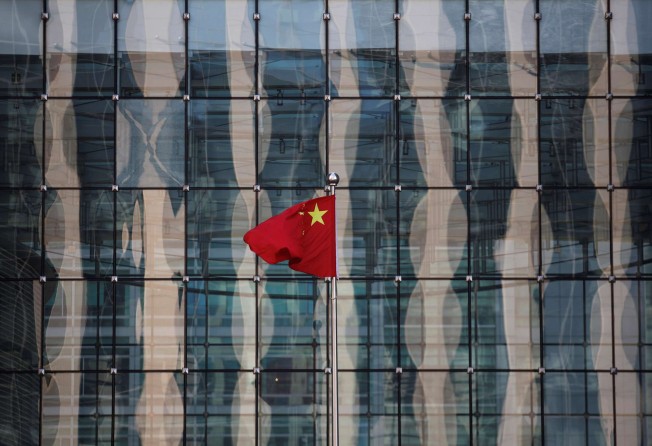Bourses respond positively to Chinese banks’ improved bad debt figures
Doubts still remain about the sustainability of the progress in the longer term

The rapid rise in the share prices of big mainland banks listed in Hong Kong demonstrates the importance markets place on the lenders publically announced bad debt levels. These saw a marked improvement in the second quarter, even though the banks’ overall performance figures were mixed.
China’s top five banks – Industrial and Commercial Bank of China, Bank of China, Agricultural Bank of China, China Construction Bank and Bank of Communications – collectively posted a net profit growth of between 0.5 and 2.5 per cent during the first half.
However, despite these less than stellar figures, since August 29, share prices of Bank of China and Agricultural Bank of China have risen by over 9 per cent, BoCom by 8.3 per cent and CCB by 6.3 per cent.
According to Douglas Morton, head of Asia research at Northern Trust Securities, one significant reason for this recent rise is the improved levels of bad debts that the banks announced as part of their results.
“Global markets have become very sensitive about debt levels after the financial crisis,” he said.
“The non performing loan situation partly explains why banks are trading so low, and in the second quarter we saw the slowest non performing loan ratio growth quarter on quarter since 2011.”
ICBC actually saw its non performing loan ratio fall by 0.11 percentage points during the second quarter of 2016, after posting increases in the previous 13 quarters. As of the end of June, non-performing loans in China’s commercial banking sector stood at 1.81 per cent of the total lending.
“Since the market is pricing in a 10 per cent NPL ratio, the consensus has a long way to fall,” said Morton.
He said the banks’ share price had also been boosted by improvements in China’s industrial data during recent months, since this would cause NPL formation to slow, and increasing amounts of money from the mainland flowing into Hong Kong.
Last week Post columnist Cathy Holcombe suggested that these fund inflows reflected Chinese authorities’ desire to boost the prices of bank shares in Hong Kong.
Louis Tse, director at VC Brokerage said that mainland banks in Hong Kong were attractive to retail investors as well.
“Mainland bank stocks have low price to book ratios and are offering dividend yields of about 6 per cent, which are attractive given the low yield environment elsewhere,” he said
“Also, for the money coming from the north, investors are trying to hedge the US dollar against the renminbi by buying in Hong Kong, and they like to buy something they know, in this case banks, and the NPL situation seems not to be as bad as had been thought
Of course, this argument is premised on the NPL ratios announced being correct, and the slowing growth being sustainable. Neither the banks themselves nor analysts seem confident that this is the case.
ICBC chairman Yi Huiman had said during the earnings briefing that it was too early to say whether or not the decline in NPLs marked a turning point, while Sophie Jiang a banking analyst at Nomura described the decline in NPLs at ICBC as ‘clearly unsustainable’.
Furthermore, Huang Yiping, an adviser to the People’s Bank of China, China’s central bank, said “Official figures may have underestimated China’s bad loan problems,” the Post reported on Saturday.
Attempts by analysts to estimate a ‘more realistic’ figure for Chinese problematic debts often come up with a figure in the high single digits, though the International Monetary Fund estimated back in April that the true level of what it termed ‘at risk debt’ amounted to 15.5 per cent of total lending.
That estimate was created before the recent improvement in economic indicators which contributed to slower NPL formation in the second quarter.
“Industrial profits are the best that they’ve been for the past three years, while the higher Producer Price Index (PPI) is improving industrial pricing power and the real cost of margin financing,” Morton said.
Such broader fundamentals are probably a result of the government’s loose monetary policy and spending, which, according to Brian Coulton, the chief economist at Fitch Ratings, “ enabled policy makers to kick the can down the road’ when it comes to debt.”
Nonetheless, he added, “the concerns about bad debt are still there, and it is going to deteriorate, which is the source of the medium term risk that clearly has not gone away.”
With markets so sensitive to the NPL situation, many will be closely watching attempts to resolve the NPL situation during this window.